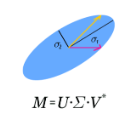
Driven by exploring the power of quantum computation with a limited number of qubits, we present a novel complete characterization for space-bounded quantum computation, which encompasses settings with one-sided error (unitary coRQL) and two-sided error (BQL), approached from a quantum state testing perspective: - The first family of natural complete problems for unitary coRQL, i.e., space-bounded quantum state certification for trace distance and Hilbert-Schmidt distance; - A new family of natural complete problems for BQL, i.e., space-bounded quantum state testing for trace distance, Hilbert-Schmidt distance, and quantum entropy difference. In the space-bounded quantum state testing problem, we consider two logarithmic-qubit quantum circuits (devices) denoted as $Q_0$ and $Q_1$, which prepare quantum states $\rho_0$ and $\rho_1$, respectively, with access to their ``source code''. Our goal is to decide whether $\rho_0$ is $\epsilon_1$-close to or $\epsilon_2$-far from $\rho_1$ with respect to a specified distance-like measure. Interestingly, unlike time-bounded state testing problems, our results reveal that the space-bounded state testing problems all correspond to the same class. Moreover, our algorithms on the trace distance inspire an algorithmic Holevo-Helstrom measurement, implying QSZK is in QIP(2) with a quantum linear-space honest prover. Our results primarily build upon a space-efficient variant of the quantum singular value transformation (QSVT) introduced by Gily\'en, Su, Low, and Wiebe (STOC 2019), which is of independent interest. Our technique provides a unified approach for designing space-bounded quantum algorithms. Specifically, we show that implementing QSVT for any bounded polynomial that approximates a piecewise-smooth function incurs only a constant overhead in terms of the space required for special forms of the projected unitary encoding.
翻译:暂无翻译


